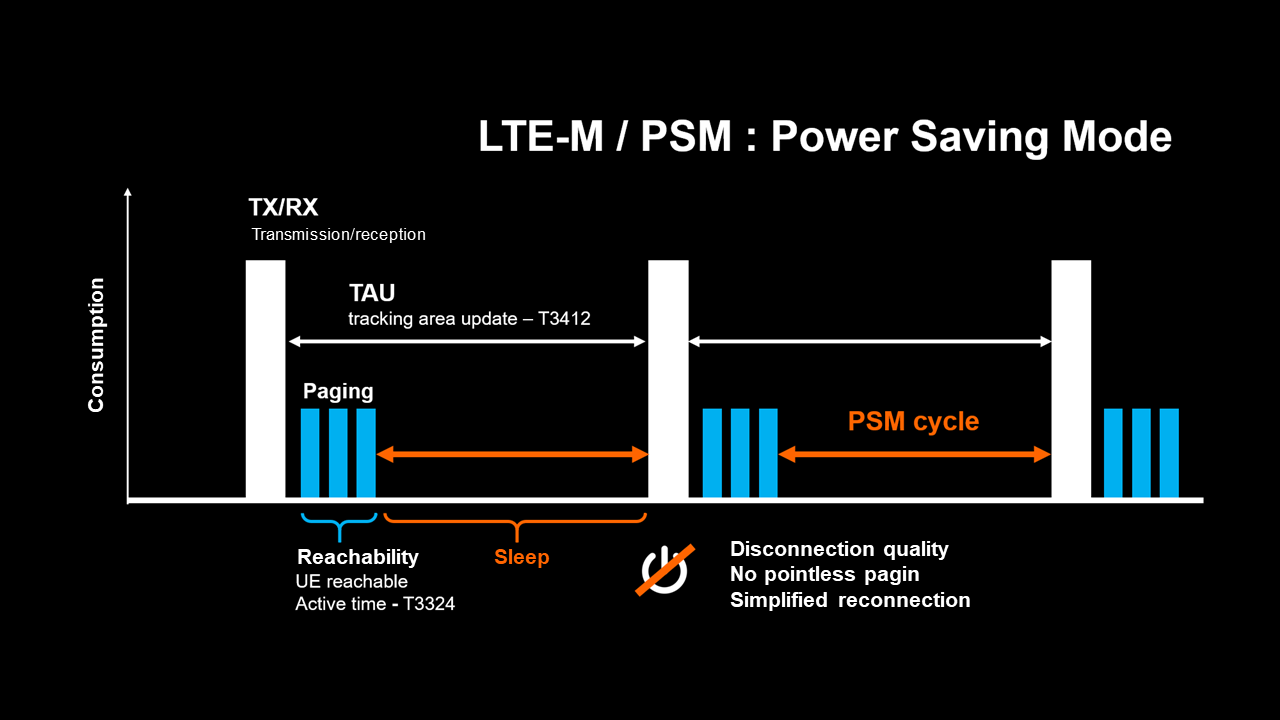What is PSM (Power Saving Mode)?
|
PSM is programmable from the connected application, enabling the user to configure and set the period in which the object can be reached. When the time period ends, the object switches to “dormant” PSM and cannot be reached. The Extended timer defines the period when the object transmits to the network, identifying itself as “awake”. The timer settings are defined by AT commands. Power Saving Mode helps optimise the power used and so the low battery consumption of a connected object by putting it to sleep. |
 |
This sleep period can last from 4 hours to 412 days. In this time the device cannot receive any data or SMS messages. However, if the device has data to transmit, it can wake up its radio circuit according to its settings (for an alert when a temperature threshold is crossed, for instance) to send that data, then return to power saving mode.
The device tells the network when it wants to go to sleep. Lifetime, and more specifically the time spent in sleep, are defined by customers using these new Internet of Things tools.
In PSM, the device tells the mobile network:
- the period in which it can be reached - the shorter this is, the longer the device extends its battery life
- the period in which it will be in PSM - the longer this is, the longer the device extends its battery life.
SMS messages are saved for 3 days when the device is in PSM.
What are the differences between PSM and Power-off mode?
Using PSM improves disconnection quality for the device, whereas Power-off is experienced by the system as an abrupt cut-out.
If lots of devices within a single cell disconnect using Power-off, the overall connection quality is degraded.
Soon PSM will notify IoT platforms of device status, so that information downloads are scheduled for the awake periods of PSM. This will help optimise and develop the various low consumption IoT solutions, avoiding pointless paging.
With PSM context retention, reconnection to the cell network is simplified and more efficient.